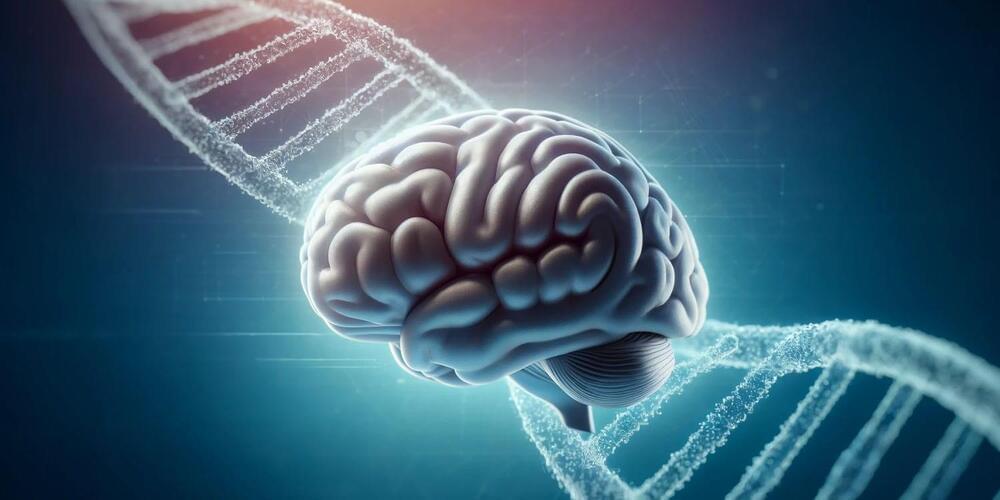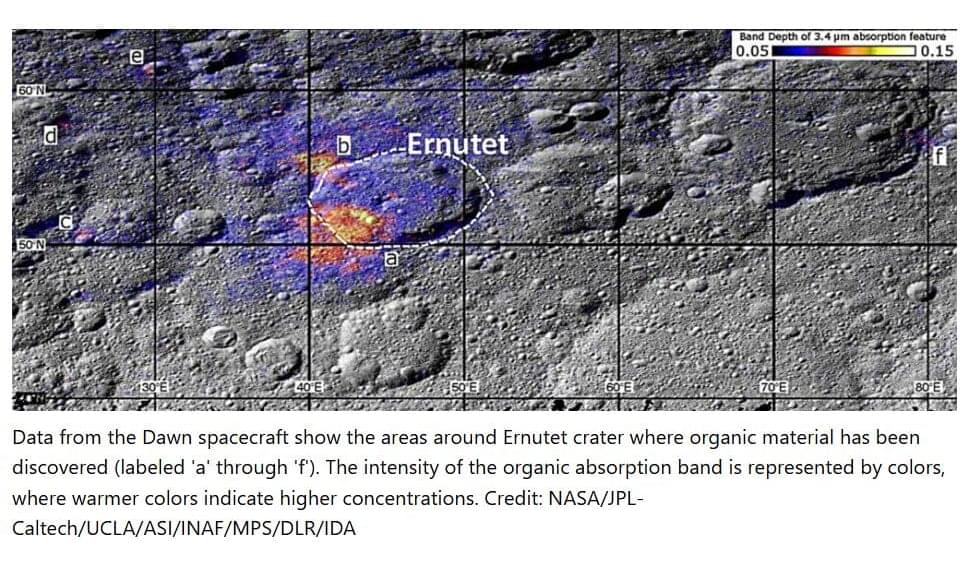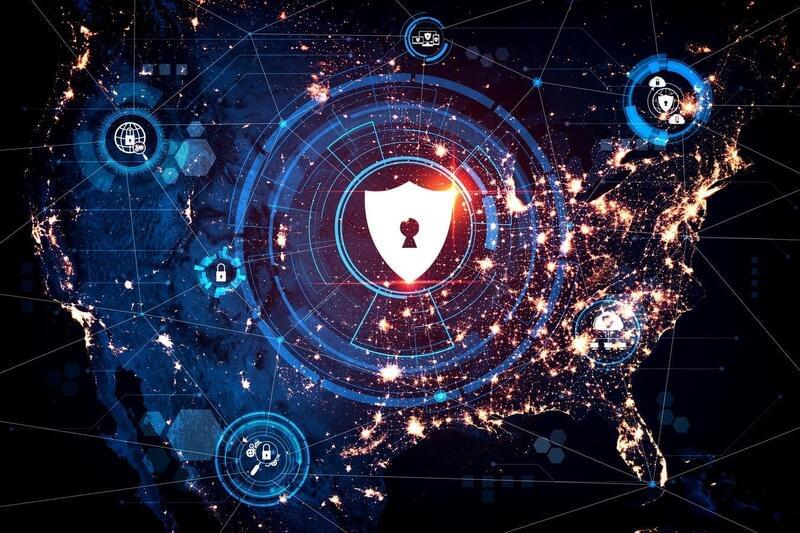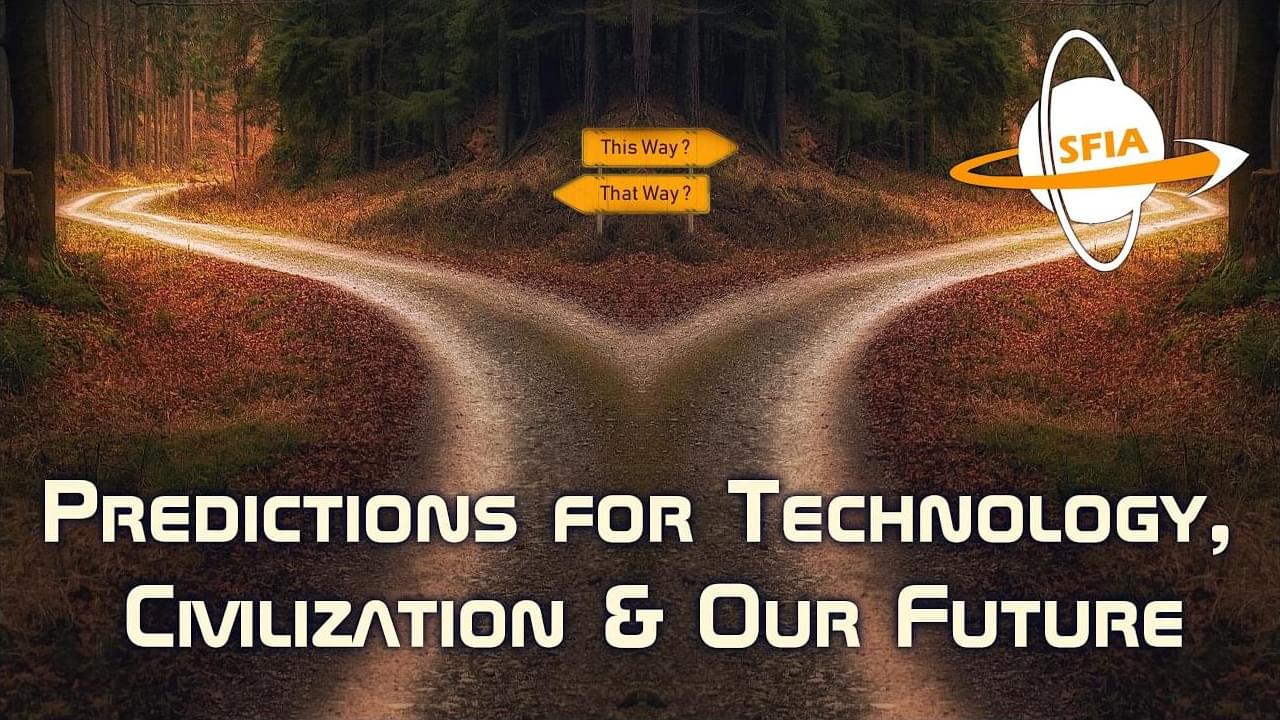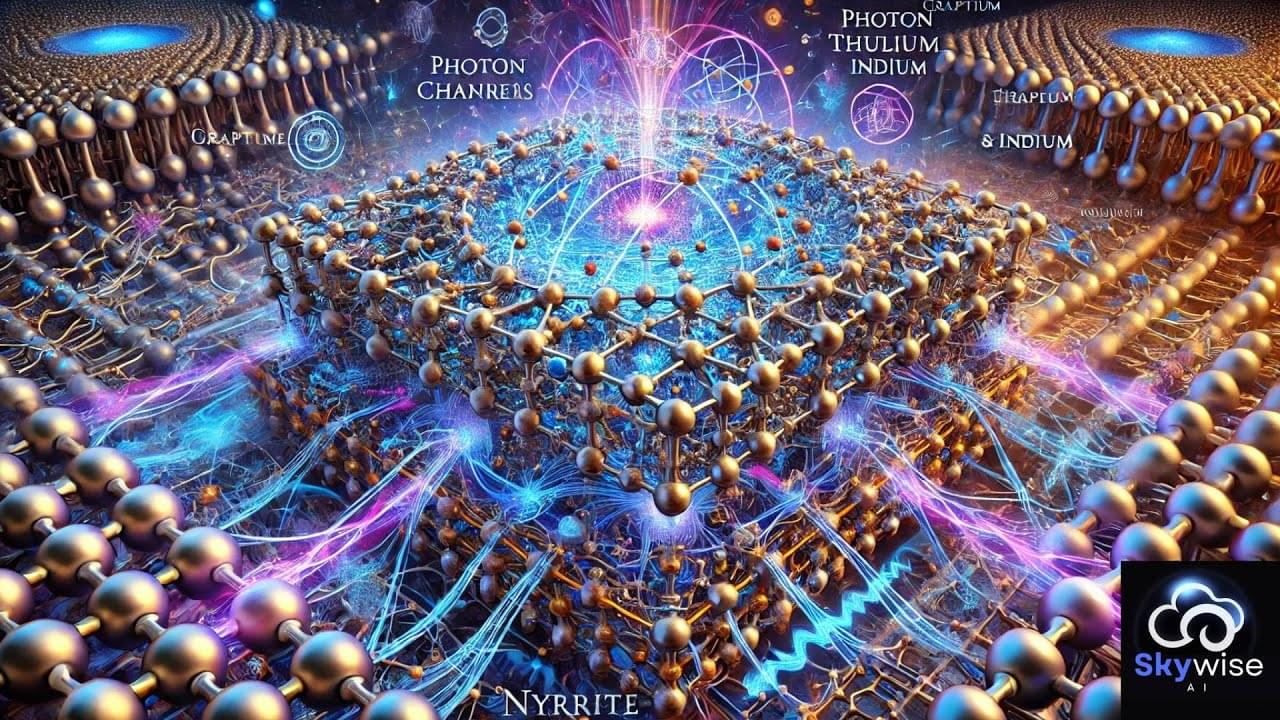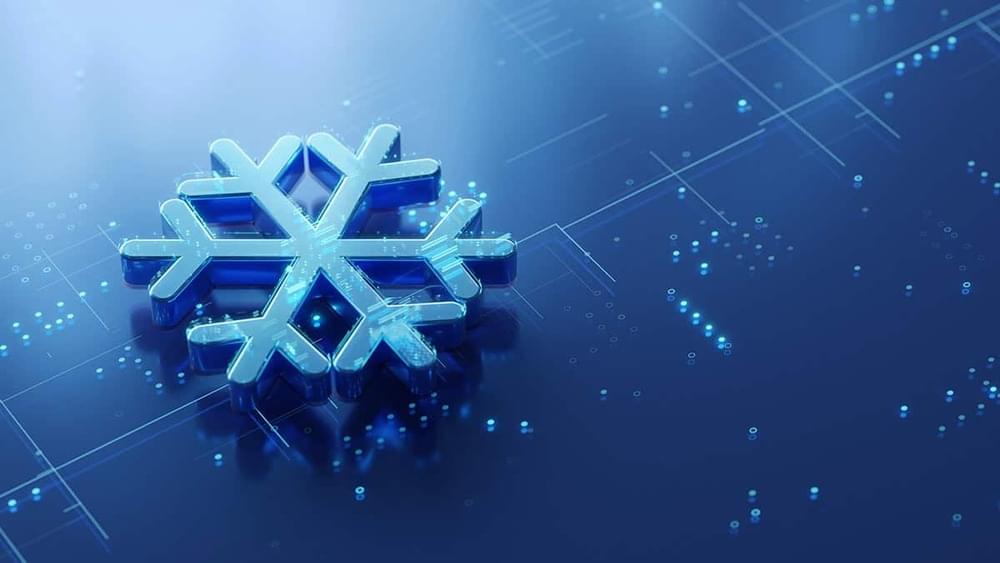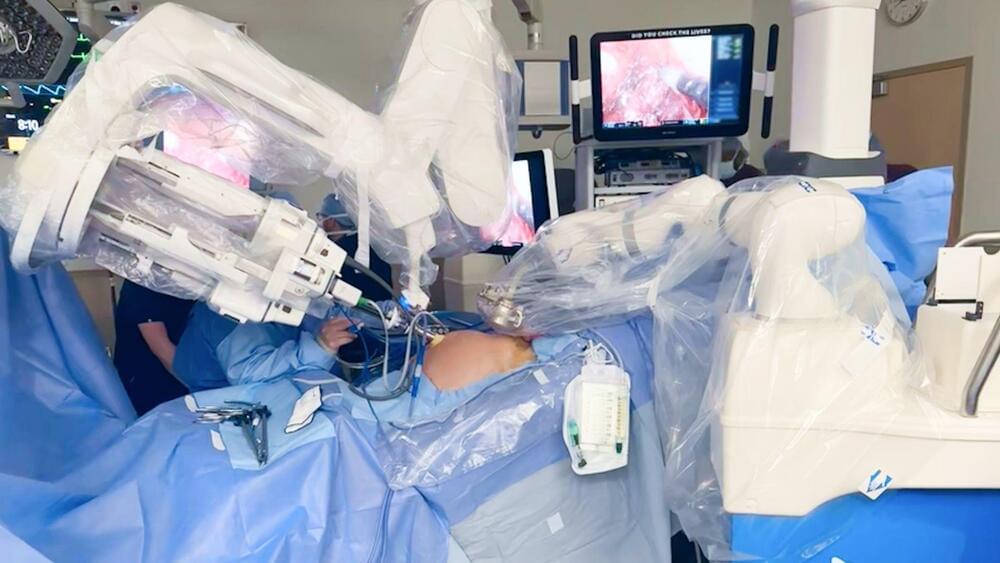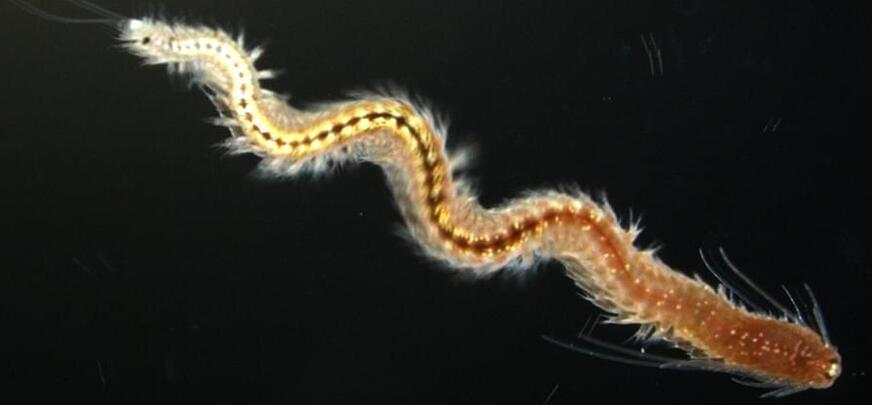A rare genetic variant, APOE3 Christchurch, delays Alzheimer’s onset by years in high-risk individuals, offering insights into disease resilience. This discovery could guide new treatments targeting similar protective pathways for Alzheimer’s prevention and therapy.
Six years ago, NASA’s Dawn mission communicated with Earth for the last time, ending its exploration of Ceres and Vesta, the two largest bodies in the asteroid belt. Since then, Ceres —a water-rich dwarf planet showing signs of geological activity— has been at the center of intense debates about its origin and evolution.
Now, a study led by IAA-CSIC, using Dawn data and an innovative methodology, has identified 11 new regions suggesting the existence of an internal reservoir of organic materials in the dwarf planet. The results, published in The Planetary Science Journal, provide critical insights into the potential nature of this celestial body.
In 2017, the Dawn spacecraft detected organic compounds near the Ernutet crater in Ceres’ northern hemisphere, sparking discussions about their origin. One leading hypothesis proposed an exogenous origin, suggesting these materials were delivered by recent impacts of organic-rich comets or asteroids.
2024: A year when AI, quantum computing, and cybersecurity converged to redefine our digital landscape. For those navigating these complex technological frontiers, clarity became the most critical currency.
Inside Cyber, Key moments that resonated with our community:
• Cybersecurity Trends for 2025 Diving deep into the evolving threat landscape and strategic priorities.
• AI, 5G, and Quantum: Innovation and Cybersecurity Risks Exploring the intersection of emerging technologies and security challenges https://lnkd.in/ex3ktwuF
• PCI DSS v4.0 Compliance Strategies Practical guidance for adapting to critical security standards https://lnkd.in/eK_mviZd.
What does the future hold? A brighter dawn or the end of the line? Join us today, and together we’ll peer into the unknown.
Watch my exclusive video Post-Stellar Civilizations: https://nebula.tv/videos/isaacarthur–…
Get Nebula using my link for 40% off an annual subscription: https://go.nebula.tv/isaacarthur.
Get a Lifetime Membership to Nebula for only $300: https://go.nebula.tv/lifetime?ref=isa…
Use the link gift.nebula.tv/isaacarthur to give a year of Nebula to a friend for just $30.
Visit our Website: http://www.isaacarthur.net.
Join Nebula: https://go.nebula.tv/isaacarthur.
Support us on Patreon: / isaacarthur.
Support us on Subscribestar: https://www.subscribestar.com/isaac-a…
Facebook Group: / 1583992725237264
Reddit: / isaacarthur.
Twitter: / isaac_a_arthur on Twitter and RT our future content.
SFIA Discord Server: / discord.
Credits:
The 21st century faces an unprecedented energy challenge that demands innovative solutions. This video explores Zero Point Energy (ZPE), a groundbreaking concept rooted in quantum mechanics that promises limitless, clean, and sustainable power. Learn how the quantum vacuum—long considered empty—is teeming with virtual particles and untapped energy potential. From understanding the Casimir effect to leveraging advanced technologies like fractal energy collectors and quantum batteries, this video details how ZPE could revolutionize industries, mitigate climate change, and empower underserved communities. Dive into the science, challenges, and global implications of a ZPE-powered future.
#ZeroPointEnergy #CleanEnergy #QuantumVacuum #Sustainability #EnergyInnovation #ZPE #QuantumMechanics #RenewableEnergy #GreenTech #CasimirEffect #QuantumEnergy #EnergySustainability #ClimateSolutions #FractalEnergy #QuantumBatteries #AdvancedTechnology #LimitlessEnergy #Nanotechnology #FutureOfEnergy #CleanPower
With so much fascinating research going on in quantum science and technology, it’s hard to pick just a handful of highlights. Fun, but hard. Research on entanglement-based imaging and quantum error correction both appear in Physics World’s list of 2024’s top 10 breakthroughs, but beyond that, here are a few other achievements worth remembering as we head into 2025 – the International Year of Quantum Science and Technology.
Quantum sensing
In July, physicists at Germany’s Forschungszentrum Jülich and Korea’s IBS Center for Quantum Nanoscience (QNS) reported that they had fabricated a quantum sensor that can detect the electric and magnetic fields of individual atoms. The sensor consists of a molecule containing an unpaired electron (a molecular spin) that the physicists attached to the tip of a scanning-tunnelling microscope. They then used it to measure the magnetic and electric dipole fields emanating from a single iron atom and a silver dimer on a gold substrate.
A quantum state of light has been successfully teleported through more than 30 kilometers (around 18 miles) of fiber optic cable amid a torrent of internet traffic – a feat of engineering once considered impossible.
The impressive demonstration by researchers in the US may not help you beam to work to beat the morning traffic, or download your favourite cat videos faster.
However, the ability to teleport quantum states through existing infrastructure represents a monumental step towards achieving a quantum-connected computing network, enhanced encryption, or powerful new methods of sensing.
Two robots, Levita’s Mars and Da Vinci SP, combined for a groundbreaking prostate removal surgery, advancing precision in minimally invasive care.
We’re way behind several species when it comes to regeneration, and scientists are keen to discover the secrets of these other animals so we can learn from them – including, in a new study, the marine worm Platynereis dumerilii.
These worms are experts in regeneration – they can survive losing a large chunk of their bodies – and now we have a better idea of how they’re doing it: specialized cells near a wound are reverting to their original stem cell-like form, before adapting again to replace lost tissue.
Regeneration in most species is handled by stem cells, which develop into whatever type of cells are needed. However, when the end segment of Platynereis is removed, multiple populations of other cells are recruited to swiftly restore the missing body section.
